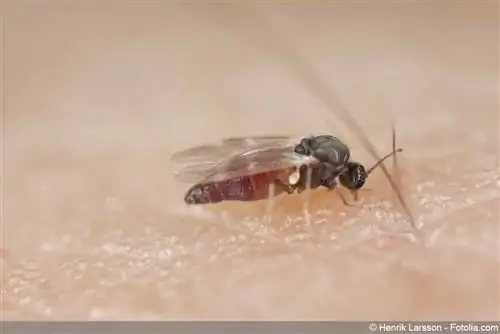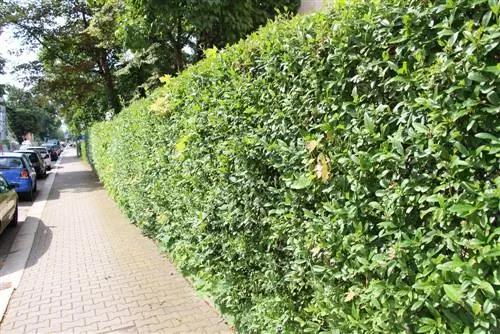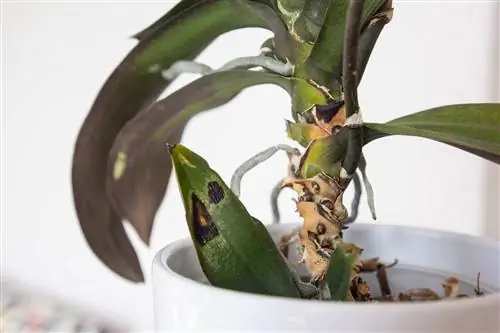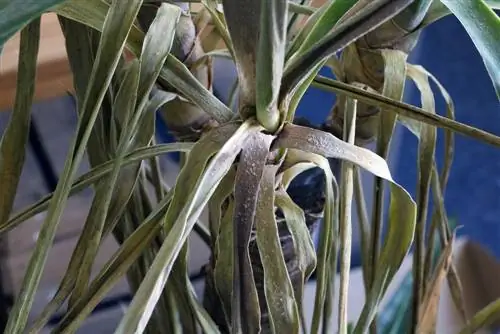- Author admin [email protected].
- Public 2023-12-17 03:39.
- Last modified 2025-01-24 12:45.
The oleander is usually a fairly easy-care plant that grows and thrives luxuriantly with the right care and the correct site conditions. However, if these factors are not consistent, various and often fatal diseases are promoted. Due to its lack of winter hardiness, the oleander is cultivated as a container plant in these latitudes, a circumstance that makes the plant more susceptible to pathogens and pests. For this reason, the oleander should be checked regularly for possible infestations and diseases in order to initiate rescue measures in good time.
Infestation with oleander canker
Oleander canker is caused by the bacterium Pseudomonas and is a common disease. Almost all oleander varieties are already infected with this pathogen, but the disease often does not break out at all. As a rule, the first symptoms of the disease appear on the flowers and buds. These atrophy or cannot develop properly at all. Thickened areas appear that become black and unsightly. If buds that are still closed are infected, they will not open at all and then burst open. The plant's shoots become stunted and form growths that resemble cauliflower rosettes. If the shoots are severely affected, they will bend or break off, especially in strong gusts of wind. In addition, when infested with oleander canker, brown spots appear on the leaves, which turn completely brown as the disease progresses. These brown spots also burst open and the leaves then bend. The following methods have proven effective for combating:
- There are no pesticides against this fatal bacterial infection
- Rescue only possible through extreme cutting measures
- Cut back affected plant parts deep into the he althy wood
- Prune generously, especially in the shoot sections
- Disinfect scissors and knives with high-percentage alcohol before and after cutting
- Dispose of the cut sections immediately with household waste or burn them
- Infected plant parts do not belong in the compost
- Prevent transmission to still he althy shoots and neighboring plants
- Carry out regular checks, also pay attention to pests
- Oleander aphids are among the main vectors of oleander cancer
Disease with dry rot
Dry rot has the scientific name Ascochyta and is caused by fungi. This fungal disease often occurs after overwintering under incorrect conditions. But a rainy and cool summer can also lead to an infestation. Normally the flowers are first affected by dry rot, they dry up and then fall off. If the disease progresses, the first symptoms appear on the shoots. From there the fungus migrates to the roots. If the roots become infected, the oleander can usually no longer be saved. Dry rot can be combated with these measures:
- Act quickly at the first signs of the disease
- Combat only possible through radical cutting measures
- Prune back deep into the he althy wood
- Seal interfaces with tree wax containing a fungicide
- Prevent the fungus from reaching the roots at an early stage
- Preventive measures with fungicidal sprays possible to nip infection in the bud
- The product should ideally be sprayed in autumn, before the upcoming winter break
- Avoid radical pruning in autumn
- Dispose of cut shoots in the trash or burn them
Tip:
In order to permanently minimize the likelihood of a fungal infection, regular pruning of the oleander should not be carried out in autumn. The wounds created when cutting offer an ideal opportunity for fungi and other pathogens to enter.
Gray horse

The oleander is particularly valued for its Mediterranean flowers. Single-flowering varieties shed their flowers on their own, so they clean themselves and make less work for the gardener. In contrast, with the double-flowering varieties, the dead flowers remain attached to the plant. Over time it dries up and then has to be removed by hand, which is a lot of effort, especially with large plants. Otherwise, gray mold infestation may occur. This can be recognized by moldy-looking flowers on plants and also often affects the buds and shoot tips. Gray mold is caused by the botrytis fungus and only affects oleander flowers. Varieties that have double flowers are particularly susceptible to this fungal disease. Gray mold often occurs in winter quarters when the plant is particularly sensitive. In addition, humid and warm summers and extremely high humidity promote the infestation. This procedure can be used to contain the fungal disease:
- Remove infected and moldy oleander flowers quickly
- Inject fungicidal agents as a preventive measure
- Pick off dead and dried flowers before moving to winter quarters
- Remove dead inflorescences immediately, especially during rainy summer days
- Self-cleaning and single-flowering oleander varieties are less susceptible to gray mold
- Protect from too much rain in the summer months
- Use fungicides before putting away for the winter break
- Ensure sufficient air exchange in the winter quarters to keep humidity low
Sooty mildew
Sooty mildew, like all other types of mildew, is a fungal disease. This often occurs after an infestation with sucking pests, especially aphids. Sooty mildew multiplies extremely well in the sugary excretions of insects, which often occur in high humidity. A symptom of the fungus is black leaves that appear sooty.
- Leaves cum enough and strong
- Ideally wash affected areas with a cloth or brush and soapy water
- Combat pests early and sustainably
Fighting pests
The heat-loving oleander is very susceptible to pest infestation, especially during the winter months. The pest insects suck out the plant sap and weaken their host, making it more susceptible to diseases. But a summer season that is too cool and rainy also promotes the appearance of pests. Therefore, regularly check the plants carefully so that you can intervene in a timely manner. Most of the parasites can be seen with the naked eye; a magnifying glass is helpful for very small specimens. The sooner the infestation is noticed and treated, the faster the annoying insects will disappear and the oleander can recover.
Oleander aphids
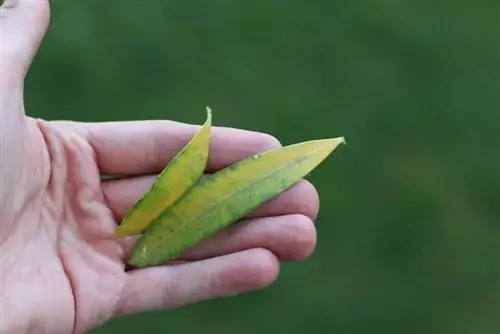
Oleander aphids are one of the stubborn pests that like to come back again and again. These are light yellow in color and about two millimeters in size. Oleander aphids settle in dense colonies only on the soft shoots of the oleander, mainly on the inflorescences and the newly formed shoots. This results in curling and yellowing of the leaves. There are also winged lice, which can spread quickly and widely due to their mobility. The sticky excretions of the voracious aphids, known as honeydew, cause a major problem. These promote fungal diseases, especially sooty mildew.
- If there is a clear infestation, simply remove aphids by hand
- Hose off aphids with a sharp jet of water, for example with a shower head
- Repeat cumming multiple times
- Use biological preparations for extreme and recurring infestations
Spider mites
If it is dry and warm for longer, these weather conditions promote the appearance of spider mites. On oleander, the parasites prefer to sit on the underside of the leaves and form small colonies. An infestation then causes yellowish speckles on the upper sides of the leaves. These tiny little animals are only 0.5 mm in size and are therefore very difficult to recognize. As soon as the webs typical of the pests form and can be seen with the naked eye, the spider mites have already spread extremely.
- Counteract dry and warm conditions
- Spraying the leaves regularly with water
- Constantly increase the humidity
- For small plants, put a transparent foil bag over the bag
- Spider mites usually die within two weeks of starting treatment
- In case of extreme infestation, use biological pesticides
- Products based on rapeseed oil have proven themselves
mealybugs and mealybugs
When mealybugs and mealybugs infest them, the little animals secrete a waxy substance. This envelops the parasites like a small, white cotton ball, which is where the name comes from. The pests only grow between 1-12 mm in size and are more common in these latitudes. They weaken the oleander by sucking on the leaves, stems and roots. Affected leaves first turn yellow, then they curl up and then fall off. At the same time, the parasites secrete a poison with their saliva, which severely impairs the growth process of the affected plant. If there is a severe infestation, it can kill the oleander, so quick action is necessary.
- Isolate affected plants immediately
- Quarantine location should be as bright and cool as possible
- Cut off severely diseased plant parts
- Spray with a solution of a little spirit, lots of water and a little soap
- Wipe affected areas with a soft cloth
- Alternatively, a mixture of paraffin oil can also help in the early stages
Damage caused by too much sun
The oleander is a heat-loving plant, but too much strong sunlight can cause sunburn. Therefore, in addition to protection from rain and wind, the sensitive plant also needs protection from strong midday sun, especially in the summer months. A location that has shade at this time of day, but still gives the plant enough sun in the morning and afternoon hours is ideal. If sunburn occurs, the leaves become unsightly. The discolored areas are either red, brown or, in extreme cases, silvery-gray.
- Change location if the midday sun is too strong
- If necessary, set up mobile shade
- Cut off affected and dead shoots and leaves
Preparation for winter quarters
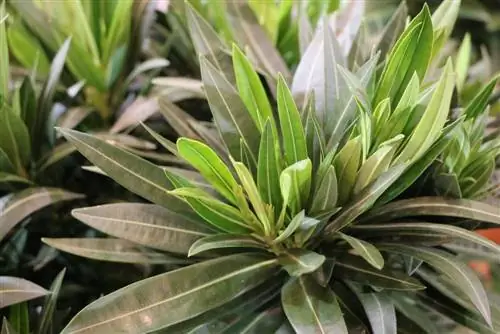
The winter quarters and the conditions therein are crucial for the he alth of the oleander. If the plant overwinters in winter gardens that are too warm or in rooms with an average temperature of over 15° C, pest infestation often occurs. In a frost-free but cool area, the plant is spared from parasites.
- Ideal winter quarters have low temperatures and bright conditions
- Average temperature values between 5-15° C are ideal
- Treat affected plants organically, with a mixture of potassium soap and rapeseed oil preparations
- Repeat application more often
- Check plants carefully for pest infestation before moving to winter quarters
Conclusion
Due to its origins in warm regions, the oleander is very sensitive to the local conditions. Many diseases and pest infestations can therefore be traced back to incorrect conditions. Improper and lack of care also leads to weakened plants that are more susceptible to pathogens and parasites. For this reason, the oleander must be checked regularly and treated immediately at the first signs of illness. If it is in a pot in close proximity to other oleander plants, it is advisable to move it to a quarantine station in order to sustainably prevent transmission.


